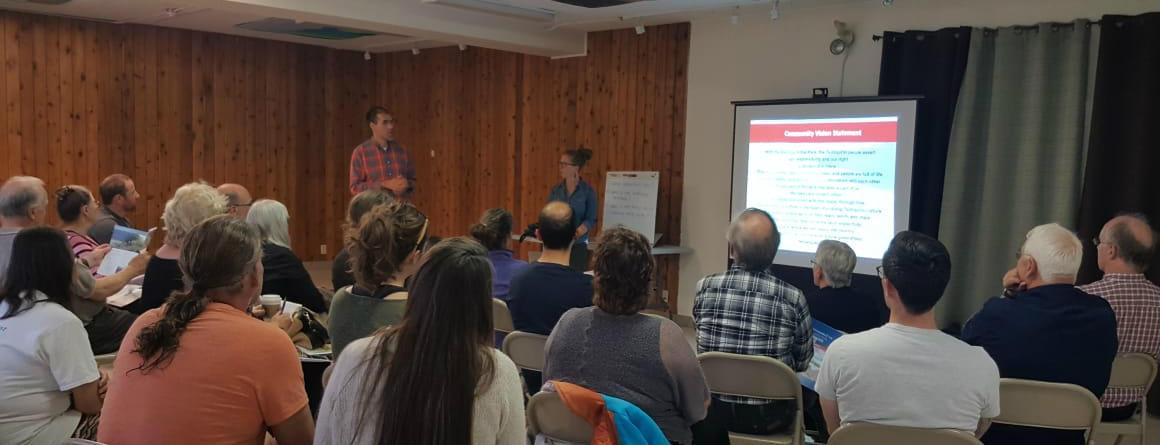Today, we’re releasing our 2018-2019 public engagement summary report, which reflects what we’ve heard over the past year since the release of the Nexwagwezʔan – Dasiqox IPCA Community Vision back in April 2018, as part of DTP’s ongoing management planning process.
The report, which also includes an FAQ section, groups feedback into three main themes:
- relationship building & communication,
- reconciliation and,
- common interests & concerns.
Thank you to everyone who took the time to come to the Dasiqox IPCA meetings, submit their comments and feedback, and pledge their support — sechanalyagh.
We have had some insightful and challenging conversations. The IPCA concept can spark a lot of strong feelings and touches on contentious topics, and while much of the feedback has been positive, some has also been fractious and at times disrespectful; it is important that we find ways to create respectful interactions moving forward.
As the Dasiqox IPCA continues to evolve and grow, the dialogue will continue. For more information, contact us at info@dasiqox.org or join our mailing list for updates.
What has been happening so far with the management planning process?
Since announcing the Dasiqox IPCA in 2014 at a totem pole ceremony at Teẑtan Biny (Fish Lake), Yuneŝit’in and Xeni Gwet’in leadership have been hard at work establishing strong foundations for establishing and managing it – this includes:
- 2015-2016: Commissioned an internal strategy report to take stock of the many community-led projects and initiatives done in the area to date and establish priority action areas for establishing the IPCA
- 2016: Released the Dasiqox IPCA position paper to the public, highlighting the three pillars of environmental protection, cultural revitalization and sustainable livelihoods
- 2016-2017: Conducted interviews, focus groups and feedback sessions with over 70 community members from Yuneŝit’in and Xeni Gwet’in to create the 90-page Dasiqox IPCA Community Vision and Management Goals document
- 2018: Released the Community Vision summary for feedback from other Tŝilhqot’in communities and the public; held public information sessions & meetings on the proposed IPCA
Our work in 2019 and beyond includes working to define — both for the Tŝilhqot’in and the broader community — our proposed management plan for the area. Developing a management approach through community engagement, for an Indigenous protected area in a region where there is no existing model, takes time. In other locations where similar designated areas have been proposed, these kinds of processes have lasted from 10 – 30 years.
For the Dasiqox IPCA, this work is still in progress — and while there are a number of variables in the timeline, we hope to have a management approach and action plan completed in the next three to five years.
Related documents:
